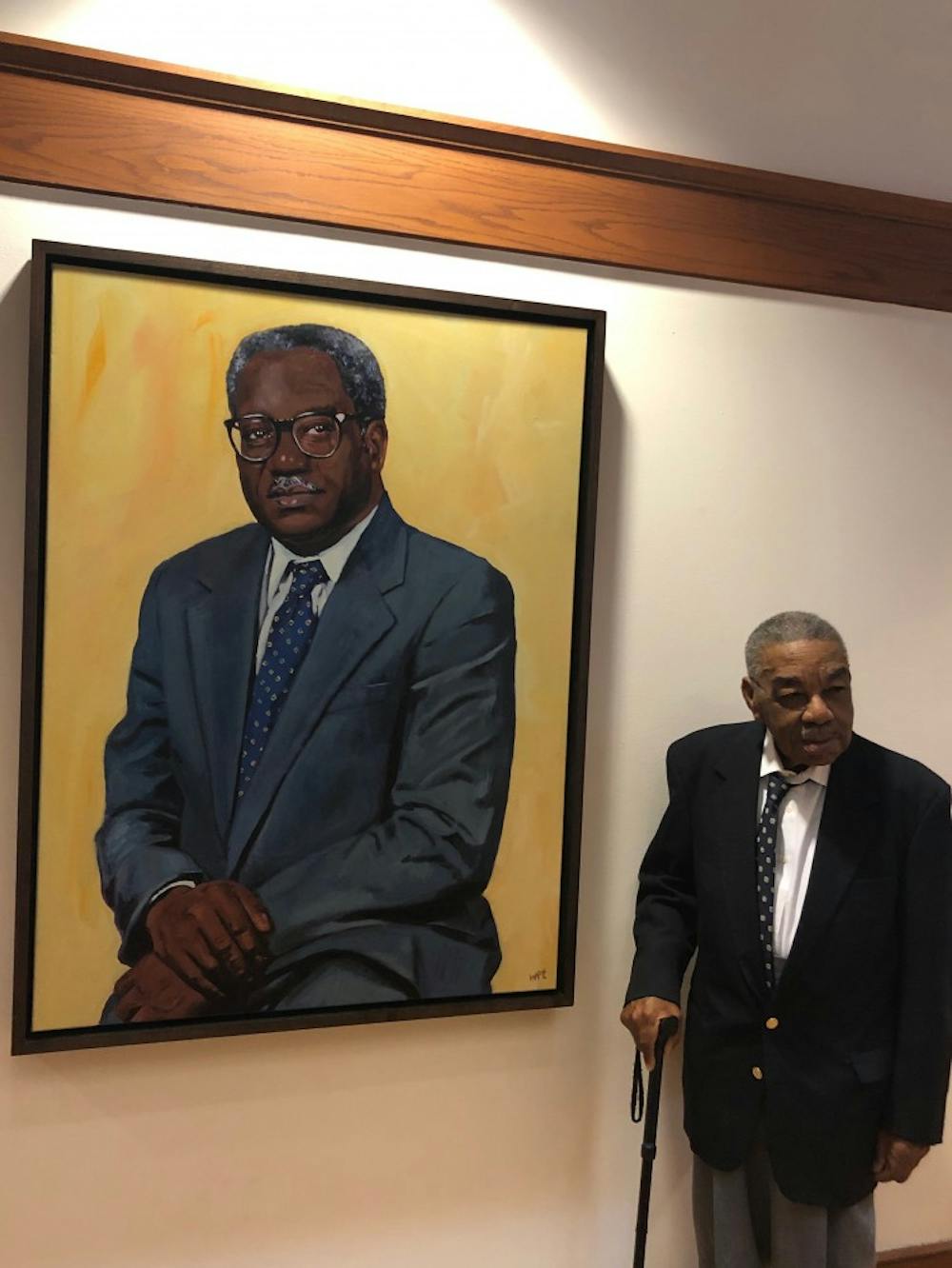Julius Chambers was known during his life as a distinguished litigator and tireless champion of civil rights at state and local levels. Now, his portrait hangs prominently in the school where he earned his law degree.
A portrait of Julius Chambers was unveiled in the Rotunda of the UNC School of Law on Tuesday. Chambers was a notable alumnus of the school and served as the first director of the UNC Center for Civil Rights at the law school.
The portrait was commissioned by the law school's committee of diversity and inclusion to honor Chambers' legacy and his profound impact on North Carolina and the nation, Andrew Chin, a law professor, said.
The ceremony had a variety of speakers including multiple law professors, the artist and Chambers' brother, Kenneth Chambers. The speakers took turns praising Chambers' legacy and emphasizing the timeless impact he made on the law school.
"Julius Chambers' spirit dwells in our halls, a shining source of pride in the difference one person's dedication to the law can make in the lives of countless others," Martin Brinkley, dean of the UNC School of Law said.
John Charles Boger, a professor of law emeritus, told the story of Chambers inviting a woman to a professional lunch because she had been standing in his office, seeking his assistance on behalf of her son, who had special needs and was being locked in the closet at school.
"Julius Chambers deserves to be remembered, and would want to be remembered, for always being available to the thousands of poor people of color, who for centuries had not had anybody to represent them but who knew that they could call first the lawyer, Chambers," said Richard Rosen, a professor of law emeritus. "He was and remains their champion."
Theodore Shaw, the current director of the Center of Civil Rights, emphasized how Chambers continued to give back to UNC despite the discrimination and mistreatment he faced while attending law school there.
Shaw reminded the audience that despite Chambers' success — among other accomplishments, becoming the first editor of a law review at a predominantly white university in the South — he still faced inequality.



